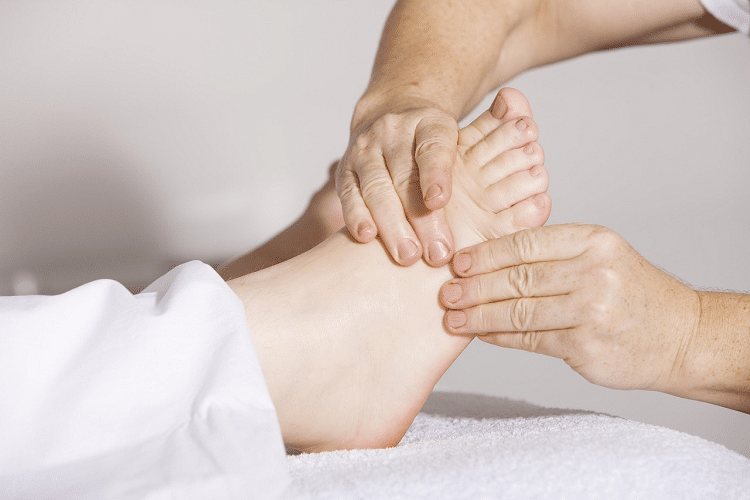
Sciatica Nerve Pain: What Are Its Causes and How to Treat It?
Back pain is one of the most common medical conditions. 8 out of 10 people suffer from it at some point in their lives. 8 percent of all adults—some 16 million—experience chronic back pain as a result of everyday activities, while 65 million Americans report having suffered from recent episodic back pain, making it the sixth most costly medical condition in the United States.
It is undeniable that most of us adults suffer from back pain at some point during our lives. However, we all suffer on different scales with different types of pain. Some are constantly dull; others are sudden but sharp—both are equally bad. Some kinds, which are caused by nerves, can even spread onto a longer area of a body.
Most kinds of back pain can be treated with over-the-counter medicines and some rest. But severe and chronic back pains require powerful drugs, or even surgeries, to be fixed. If you feel pain in your back, it might be hard for you to pinpoint its source. Where does the ache originate? But sometimes, it is very easy to identify and pinpoint the location of a painting area. One of such easily-locatable types of pain is Sciatica.
Table of Contents
What Is Sciatica?
Sciatica is a pain that occurs along your sciatic nerve that is located on your lower back and branches through your hips, buttocks, and down each leg. Although a sciatic nerve is spread on a large area of a body, it only affects one side.
Typically, sciatica occurs when the sciatic nerve gets pinched. It can happen either because of an overgrowth of a bone spur or through a herniated spinal disk. In rare cases, the sciatic nerve can also be compressed due to a tumor. Sometimes, pre-existing conditions, such as diabetes, can also damage the sciatic nerve which results in sciatica.
The pain in the sciatica ranges from a mild ache to severe, sharp pain. Since sciatica radiates along the wider part of your body, unlike other kinds of back pain, it becomes easy to identify it. Apart from a mild or sharp pain, the symptoms include tingling in the body, numbness, and weakness in the foot or leg.
Causes of Sciatica
It is stated above that compression, pinching, or damage of the sciatic nerve—usually because of a herniated spine disk—can result in sciatica, with a rare amount of people being affected because of an overgrowth of a bone spur or a diabetic condition.
But questions that people usually ask is how exactly can it happen to an average individual and how can they avoid it?
Well, unless the pain occurs after an incident or because of a pre-existing condition, there is no way to tell how you caught it. But in most cases, it happens because of risk factors. Below are the risk factors that are the most prominent causes of sciatica.
Obesity
Obesity is the factor that plays in a lot of problematic medical conditions, including sciatica. Having extra fat and being overweight puts pressure on your spine. When the spine gets pressured, it is likely to push out of the annulus and cause compression on the sciatic nerve, resulting in sciatica.
Overweight people, including those who are pregnant, are more likely to be affected with nerve compression or herniated disc.
Age
People between the ages of 30 and 50 are most probable to get sciatica. That is because they enter the process of degeneration, which affects their bones, muscles, and nerves. As they age, their bodies begin to break down and result in the inflammation of nerves, putting them at an increased risk of getting sciatica.
Occupation
The work you have involved in plays a heavy role in the causes of sciatica. If you have a desk job, a constantly bad posture can trigger nerve damage and gradual pain. If you do the heavy lifting on daily basis, you need to be sure that you don’t strain your back. Other times, people do the occasional lifting, and because they do not have any elaborate experience, they end up damaging their muscles.
It is important that you avoid such occupational activities, or do it only under professional supervision, so you don’t strain your back.
Excessive Exercise
It is good that you are a gym-freak—there is nothing bad in trying hard to maintain shape. However, it is bad if you engage your body in exercises that tenser than your body can take, especially if you do them incorrectly, or without any instructor to guide you. Such hardcore stretching and lifting can cause strain and possibly damage nerves, resulting in sciatica
Treatment of Sciatica
If you feel pain in your lower back that creates tingling in the buttocks and legs area, it might be a hint of sciatica, and it is best if you seek immediate medical attention.
Usually, a doctor diagnoses sciatica after examining the symptoms and physical condition. However, even if you have similar symptoms, it doesn’t that you necessarily have sciatica. That is why further information can only be done after proper technical examination, such as X-rays, MRI, and CT scan. These scans provide information about the condition of tissues on your lower back, whether they are damaged, compressed, or are in a regular shape.
If you do get diagnosed with sciatica, a doctor might give you some resting tips and pain reliefs, involving over-the-counter drugs and ice packs to treat swelling. Although pain reliefs such as ibuprofen and naproxen prove to be helpful for sciatica, you might still want to follow your doctor’s commands and get recommended sciatica pain treatment.
If the condition is bad or gets worse with time, a doctor might recommend chiropractic treatment or back surgery.
Unless accidental or genetic, sciatica can be easily prevented if you keep your posture straight while sitting, do regular exercise, avoid smoking, do good use of body mechanics, and try to avoid the risk factors that are in your control.






